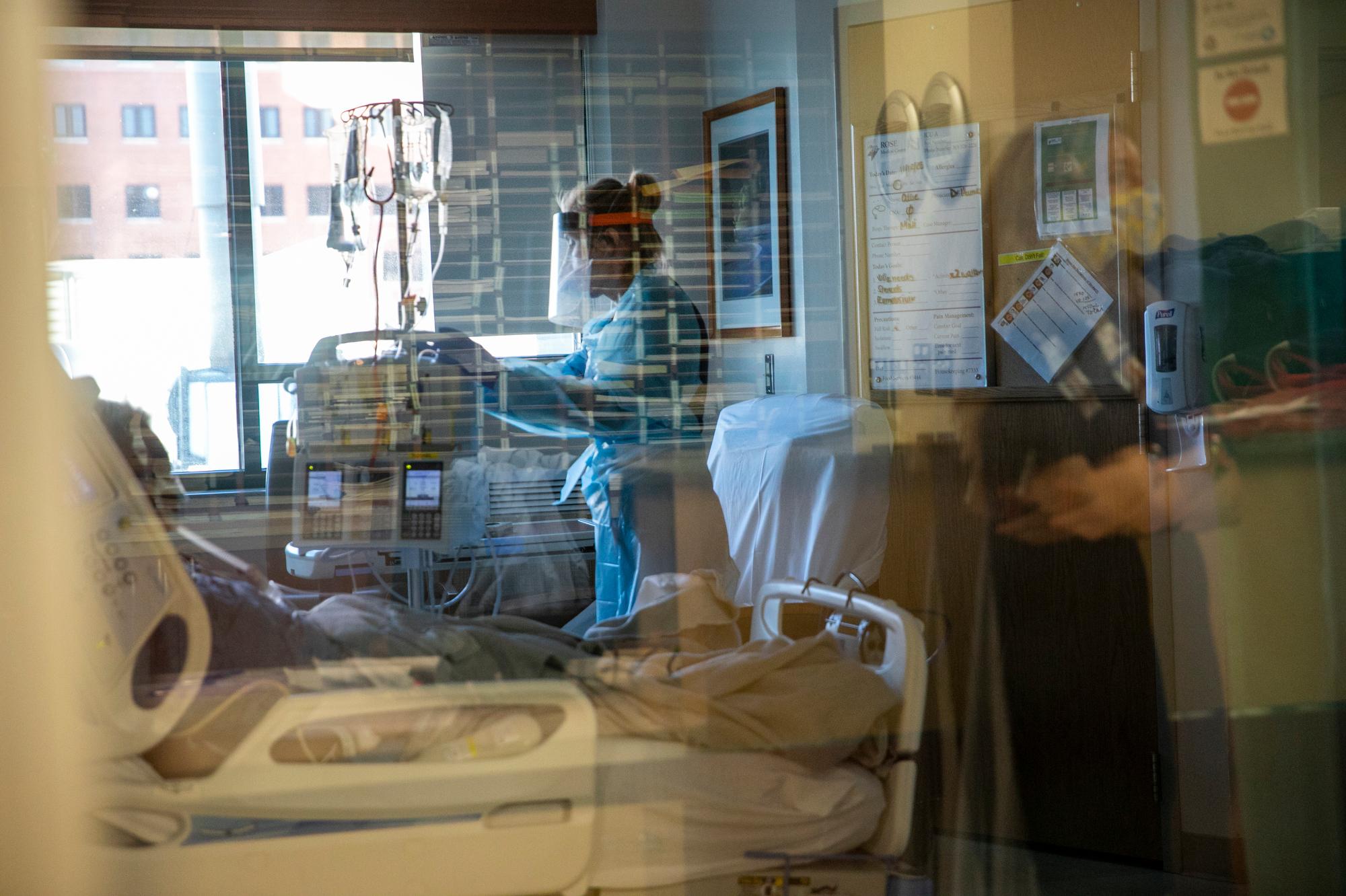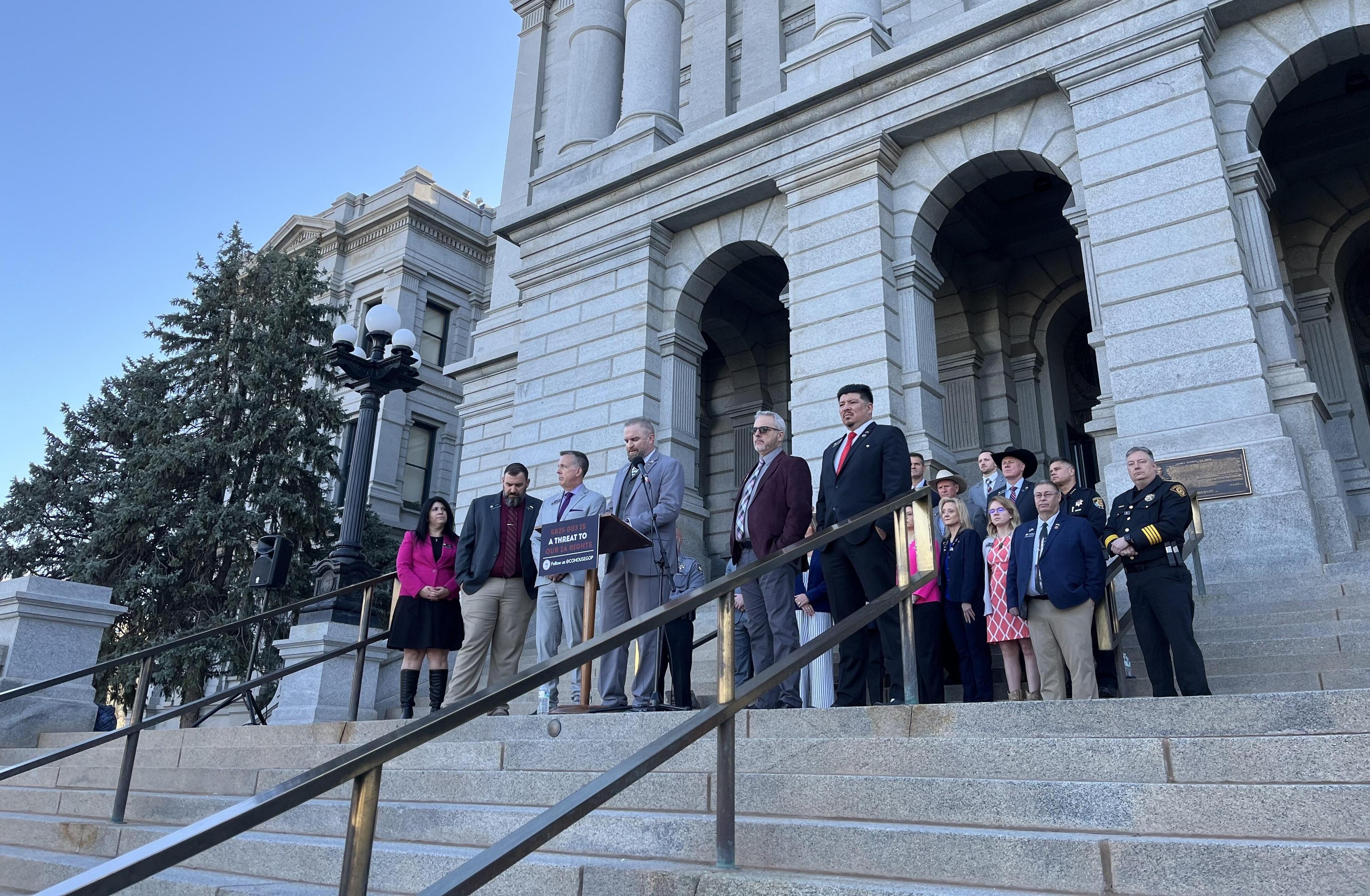
Colorado hospitals and health systems on Wednesday took the extraordinary step of activating the state’s patient transfer system to its highest level — a sign the state's hospitals are at risk of being overwhelmed.
They moved to the Tier 3 operation of the Combined Hospital Transfer Center (CHTC), the highest level available, to manage patient transfers on a statewide level.
It is the first time in the COVID-19 pandemic that Colorado hospitals have taken this step.
“We are now at the point where hospitals and our system have been stretched to almost the point of being overwhelmed,” said Dr. Darlene Tad-y, vice president of clinical affairs with the Colorado Hospital Association.
Under Tier 3, patients won't be refused treatment, but they can be moved in inconvenient or unwanted ways to make room.
The move does not mean patients, regardless of ailment, will be refused treatment.
It does mean they may be required to be transferred to hospitals with more room to treat them, even if it is inconvenient or unwanted.
The new transfer rules allow for bi-directional patient movement, so sicker patients can be sent to more specialized facilities and recovering patients can be sent to hospitals with available space and staff, even without first getting the patient’s consent for the transfer. It also requires hospitals to accept any transfer determined necessary by the center.
The move also escalates the reach of the transfer center from an individual hospital or regional level to the statewide level and creates a single point of contact for transfers.
“We've never had to take this step before so far in the pandemic, and I think it is important for the public to understand that it is a critical and important change and should be sending a signal about how serious our situation is as a hospital community,” Tad-y said.
- Nov. 1: New Colorado health order allows hospitals to refuse patients as COVID cases and hospitalizations rise
- Oct. 25: Colorado COVID-19 hospitalizations keep rising, with unvaccinated patients filling ICUs and acute care wards
- Oct. 22: ‘No place for the patient to go ’ — As a new COVID wave hits, hospitals struggle to find open beds
- Oct. 12: Hospitalizations and deaths climb as Colorado’s fifth COVID wave keeps rising
Right now, Colorado is seeing the most hospitalized COVID-19 patients it has since December 2020.
There are now more than 1,200 COVID-19 patients hospitalized in Colorado. That’s the most since December, as the highly contagious delta variant continues to spread aggressively through the state’s unvaccinated population. For weeks, roughly 80 percent of those hospitalized with coronavirus have been unvaccinated, and nearly 40 percent of hospitals anticipate being short-staffed during the next week.
The CHTC was re-activated in August as COVID-19 hospitalizations were starting to grow again in Colorado – a trend that has continued, putting what the CHA calls “monumental strain” on the state’s health care system.
Physicians working in that system said the move is not unexpected.
“I'm not surprised,” said Dr. Don Stader, an emergency medicine doctor at Swedish Medical Center in Englewood. He said those working in hospitals have been watching as conditions have been deteriorating for months, especially due to high levels of coronavirus patients.
“It's been extremely difficult working in emergency departments of hospitals over the last several months. I think while most people believe that the COVID pandemic is coming to an end, or at least at a status quo, I'll say in hospitals, we're experiencing a significant acceleration of the amount of sick people we're seeing from COVID along with just increasing numbers of other medical diseases.”
Making matters more precarious, a severe staffing pinch.
“We're dealing with a staff crunch where many physicians, especially nurses and others have left the field just because of the pressures and that burnout associated with what the last few years have been like,” Stader said.
Stader said finding a hospital to take a patient has become harder than ever.
“I've heard horror stories, and I've been a part of some of these where you have a patient that is critically ill and needs to be admitted to the hospital,” he said. “You're just trying to find a hospital that has the capability and the skills to care for the patient. And oftentimes you're calling 10 different hospitals just to try to get them on a bed and to get an accepting facility because all the facilities are full.”
Tad-y said transfers from the CHTC are done through a “data-driven process.” That ensures patients can get access to the necessary level of care, while hospitals make the most efficient use of the health care system and protect access to care for as many people as possible.
She added a busy flu season could complicate the picture considerably.
“We are on the cusp of the flu season as well. And that will only add additional pressure to our health systems that we're facing,” Tad-y said.
'Activating Tier 3 ... should send a clear message to Coloradans: Our health care system is in jeopardy of being overwhelmed.'
On Sunday, Gov. Jared Polis issued an executive order to facilitate the work of the CHTC in Tier 3 by letting the center direct the transfer of patients without first getting a patient’s consent for the transfer.
At a COVID-19 update yesterday, Polis and his team showed graphs mapping out where the pandemic could head in the coming weeks, with worsening curves depending on various factors, including mitigation measures taken by the public.
“As you can see with the projections, it's going to be tight. It is tight. It's going to be tight the next few weeks,” the governor said. "That's why we really encourage everybody to get the vaccine first and foremost. And then if you're not vaccinated, this is the most dangerous time in the entire pandemic for you.”
“This is an extraordinary step taken by the state’s hospitals and health systems,” Tad-y said. “Even when under immense pressure, the state’s health care system continues to work collaboratively with each other and our partners at the state to ensure the best care possible is available to every Coloradan that needs it. However, activating Tier 3 of the CHTC should send a clear message to Coloradans: our health care system is in jeopardy of being overwhelmed.”
At the same time, some doctors hope the elevation to the highest level of concern will smooth the process of quickly getting people the care they need.
“The number of diversion hours has exploded,” said Dr. Eric Hill, an ER physician and EMS medical director at The Medical Center of Aurora, referring to situations where ambulances go looking for hospitals to accept patients.
He said EMS crews will take patients needing immediate care, for things like a heart attack or a stroke, to the closest emergency department. But when hospitals get busy, with COVID-19 patients, plus everything else, the flow of patients can get backed and wait times can rise sharply.
Patient volumes will fluctuate, but overall those volumes are up and that adds stress to the system.
“When you look at the system as a whole, including all hospitals, and you look at the trends that have gone on over the last two or three months it’s getting busier and busier and busier,” Hill said. Things are “much more crowded, such that the hospitals are at kind of a full capacity either 24/7, or very early in the day, which is leading to significant wait times for really non-life threatening emerging conditions.”
The hospital association is urging the public, including vaccinated people, to maintain or return to the same practices that reduced the spread of the virus in the early months of the pandemic: wash hands frequently, wear a mask and watch your distance when in public.
And if not vaccinated, they ask the people consider immediately taking that step to prevent further spread.
“Our frontline health care workers and hospitals need everyone’s help to get through this,” Tad-y said. “The best solution for our capacity issues right now is to lower the number of COVID-19 hospitalizations, and we need help from all Coloradans to do that.”
And if the number of cases don't come down soon, something will have to give, Hill said.
“I haven't felt this much pressure on a shift and I've been a physician for 15 years and I've never felt this," he said. "It's worse than I felt a year ago during the initial COVID surge.”









